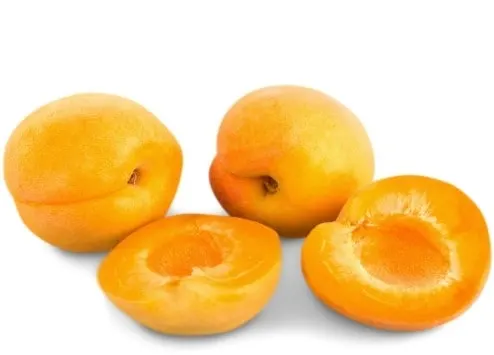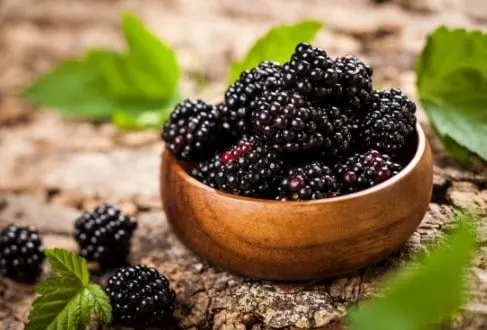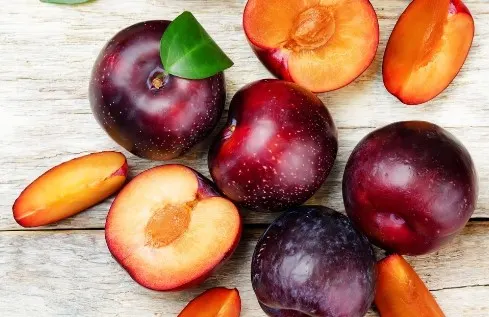Fruits can provide a lot of nutrition just like vegetables. Here is a List of Low Sugar Fruits that are highly nutritious. I also include a free printable coloring page with these fruits to make it more fun for kids to try new fruits.

I hear other moms say things like this all the time:
"My son loves bananas, but you know, I don't want to give them to him because of all the sugar."
Or
"I try not to give my daughter fruit because of all the sugar, but she doesn't eat many vegetables"
The whole keto and low carb diet trend is scaring people off from eating many super nutritious fruits. While keto and low carb diets can help some adults lose weight and feel better, most doctors do not recommend these diets for babies, toddlers, or young kids. There is no reason to avoid giving your kids healthy fruits because of trendy adult diets.
That said, this all got me thinking... there's gotta be fruits out there that are worth eating if you don't want to load your kid up on sugar!
I give my son Elliot a wide variety of fruit (or at least as much variety as he's willing to try). He doesn't eat vegetables (if you're new here, this blog is about Elliot being a super picky eater. Hi. Welcome.), so Elliot gets all his vitamins and nutrients from fruits and a few hidden vegetables. (See my toddler recipes with hidden vegetables post and my post on how to make nutritious high calorie baby food purees where I sneak in lots of vegetables.)
And yea, I'm not crazy about the sugar in fruit, I'd much preferred if he ate broccoli and asparagus (and eggplant and tomatoes and oatmeal and whole wheat bread... sigh). But I am not stopping my son from eating fruit. I strongly believe that sugar in fruit is OK. It is accompanied by fiber, nutrients, vitamins, and healthy enzymes in every bite. It's sooo not the same thing as added sugar in lollipops or cake.
For the sake of my son's health and to put an end to my friends' worrying, I did some research on the most nutritious low sugar fruits. When I googled "low sugar fruits" I got results like olives, avocado, lemons, cranberries. Uhhh, I'm pretty sure that's not what anybody is looking for when they google low sugar fruits.
So here is a much more useful list of low sugar fruits that have a wide variety of nutrients. You can absolutely offer these fruits to your kids as part of a healthy diet.
Before we continue with the list, I wanted to say 5 quick things:
1) I believe in the whole "eat the rainbow" thing. Most fruits and veggies get their colors from different vitamins and nutrients. Orange fruits and vegetables, such as sweet potato, carrots, cantaloupe, and pumpkin have a lot of Vitamin A. Many dark leafy greens are high in calcium. You get the idea. So you can have a pretty rich diet without tracking those nutrients just by making sure you eat lots of different colors of fruit and vegetables over the course of the week (not necessarily daily, it's almost impossible to eat all the colors daily). Typically, the darker and richer the color, the more nutrients and antioxidants a vegetable or fruit has.
2) You should definitely check with your pediatrician or a professional nutritionist/dietitian about any nutrition recommendations you read online (even this article!) if you are concerned about your child's food intake or any health conditions. And talk to your pediatrician about food allergies before offering your child any new foods. (I wrote about our experience with allergy testing in babies.)
3) While these fruits can provide lots of nutrition and take the place of some vegetables nutrition-wise, I am not recommending you give up on vegetables if you have a picky eater kid. Keep offering them lots of vegetables every day! Consistent exposure can eventually lead to your child accepting the foods that are on their plate. This process can take months, don't give up if they refuse to try vegetables several days in a row.
4) Make sure you grab the free printable coloring page with these fruits at the bottom of the post! It's a little bonus I offer as a thank you for signing up for my newsletter. The coloring page might motivate your kid to try every fruit on the list, or at least give you 5 minutes of quiet time while they color.
5) If you're not following this blog on Facebook, Pinterest, or Instagram, you should absolutely change that! Pick the social media platform you use most and follow along for more useful posts about all things toddler / parenting / picky eating. And make sure you send me a message and say hi. It would make my day.
OK, so here we go!
Highly Nutritious Low Sugar Fruits List
Here's a quick video, but make sure you read below to learn more about each of the low sugar fruits on this list!
Raspberries

Raspberries have just 2.5 grams of sugar per ½ cup serving. They also have potassium, magnesium, vitamin B-6, iron, manganese, vitamin K, vitamin E, a lot of vitamin C, and fiber (helps your kids poop). (Source)
Strawberries

Strawberries have 4 g of sugar per ½ cup serving. They also contain fiber, calcium, magnesium, phosphorus potassium, vitamin C, folate, and vitamin A. This low sugar fruit is a favorite with babies and toddlers. (Source)
Apricots

One apricot has 3 grams of sugar. They are also a good source of fiber, vitamin A, and vitamin C, as well as several antioxidants such as polyphenols, flavonoids, and beta-carotene. (Source)
If apricots are not a common fruit in your household, you should give them a try! They are sooo delicious when they are ripe and in season. You can eat apricots whole with the skin on, just like a peach. Just watch out for the pit in the center (just like a peach!).
Dragon Fruit

Dragon fruit, or pitaya, are all the rage now, especially in smoothie and juice bars. Half a dragon fruit has about 4.5 grams of sugar. (Source) Dragon fruit can be white or an intense magenta color inside, and they taste sort of like a mild kiwi. If you've never had one, you've GOT to try it!
Blackberries

Blackberries have 3.5 grams of sugar per ½ cup serving, as well as a ton of antioxidants and polyphenols because of their intense dark color. (Source)
They are super juicy and taste great. If your kiddo is picky about texture and doesn't love the tiny seeds in blackberries, you can puree them with other fruits/vegetables into a smoothie or baby food pouch, or you can process them in a blender and then strain the juice to offer to your kid.
Watermelon

Watermelon has 4.5 grams of sugar per ½ cup serving. It also contains vitamin B-6, vitamin A, potassium, lycopene, and vitamin C. (Source)
Kiwi

One kiwi has 3 grams of sugar. It also has a ridiculously high amount of vitamin C (more than oranges! and that's OK - your body just excretes extra vitamin C that it doesn't use [aka you pee it out]), lots of fiber, potassium, magnesium, lutein (what even is that??), folate, and antioxidants. How does one little fruit pack all that nutrition?? (Source)
Papaya

A ½ cup serving of papaya has 4 grams of sugar. It also has a lot of potassium, folate, vitamin A, vitamin C, and fiber. (Source)
Papaya is also a fruit that a lot of people forget about, but most kids LOVE it. It's juicy and soft, and is great cubed or in smoothies.
Cherries

Cherries contain 4.5 grams of sugar per ½ cup serving (that's about 10 cherries). The dark red bing cherries have a lot of vitamin C, potassium, antioxidants and anti-inflammatory properties. (Source) Just make sure you remove the pits before offering them to young kids, toddlers, or babies.
Plums

A plum has 7 grams of sugar, as well as a good amount of vitamins C and K, and copper. Their dark skin also means that they contain antioxidants. (Source)
Clementines and Oranges

A small orange contains 9 grams of sugar, and a clementine contains 7 grams of sugar. Both citrus fruits have lots of vitamin C, potassium, fiber (if eaten whole and not juiced), and antioxidants. (Source 1, Source 2) Clementines are fun to peel and fun to eat!
Starfruit

Starfruit has one of the lowest sugar contents of all these fruits: one small starfruit has 3 grams of sugar. (Source) This means that starfruit usually doesn't taste as sweet as the other fruit on this list. But it's juicy and fun to eat because it's shaped like a star!
So there you go! 12 low sugar fruits. I am willing to bet that you might have forgotten about some of these fruits and often default to bananas, apples, grapes, and peaches. And that's OK. But next time you're grocery shopping, take a look around the store and see if your kid is willing to try some of these fruits.
And while this article is not about fruits that have lots of sugar, I wanted to list some fruits that do have higher sugar content: grapes, bananas, peaches, cantaloupe (moderate amount), mangos (but so delicious!), pineapple are just a few.
That's not to say you shouldn't offer these fruits to your kids. Just be mindful if sugar is a concern for your kid's diet.
Just to give you an idea of what all the sugar amounts mean: a teaspoon of white granulated sugar is 4 grams of sugar. But white granulated sugar is added sugar. As I mentioned above, added sugar in desserts is very different than naturally occurring sugar in fruits, vegetables, and even cow's milk or breast milk (which is SO much higher in sugar than most fruits - 17 grams per cup!).
The American Heart Association currently recommends that children under 2 avoid any added sugars, and children ages 2-18 eat less than 6 teaspoons (24 grams) of added sugars per day. They do not have a recommendation on restricting fruits. (Source)
Most of the fruits above have 3-7 grams of sugar per ½ cup serving, or per fruit. If you're dealing with a baby or a young toddler, chances are they're not eating a full adult serving during a meal.
But even if they are eating a full serving... that would be the equivalent of about 1-2 teaspoons of sugar per serving. Even if they have 2-3 servings of these fruits a day, the amount of natural sugar is still likely under the recommended 6 teaspoon daily limit of added sugar.
Watch out for things like flavored yogurts (especially yogurts marketed to kids), juice, barbecue sauce, ketchup, processed foods, and sweets/desserts. But don't be afraid of the natural sugar that comes in nutritious fruits! At least that's my stance on this topic. What's your opinion?
Free Printable Coloring Page
My son usually needs a small activity to do at the dining table to keep him sitting longer, so I created this printable coloring page for him to color while he is eating. If your kiddo is a bit older, they might be motivated to try all these fruits if they can color in a fruit every time they try one. This free printable is a bonus and a 'thank you' I offer when you sign up for my newsletter to get notified of helpful parenting and picky eating tips. To get the printable and sign up for my newsletter, just click here or on the image below:
You might also be interested in these posts:
- Hidden vegetable breakfast recipes for picky toddlers
- Hidden vegetable lunch, snack, and dinner recipes for picky toddlers
- 7 reasons to let your picky eater have French Fries (and how to turn French Fries into a "gateway" food)
- How to use the nuk brush to stop gagging and throwing up during meal times
I'd love to hear your thoughts on all of this! There's no one correct answer when it comes to keeping your child fed and happy, and I am always looking to learn more about nutrition for my son. Leave me a comment below and let's talk about it!
And don't forget to share on Facebook or Pinterest if you found this helpful.



